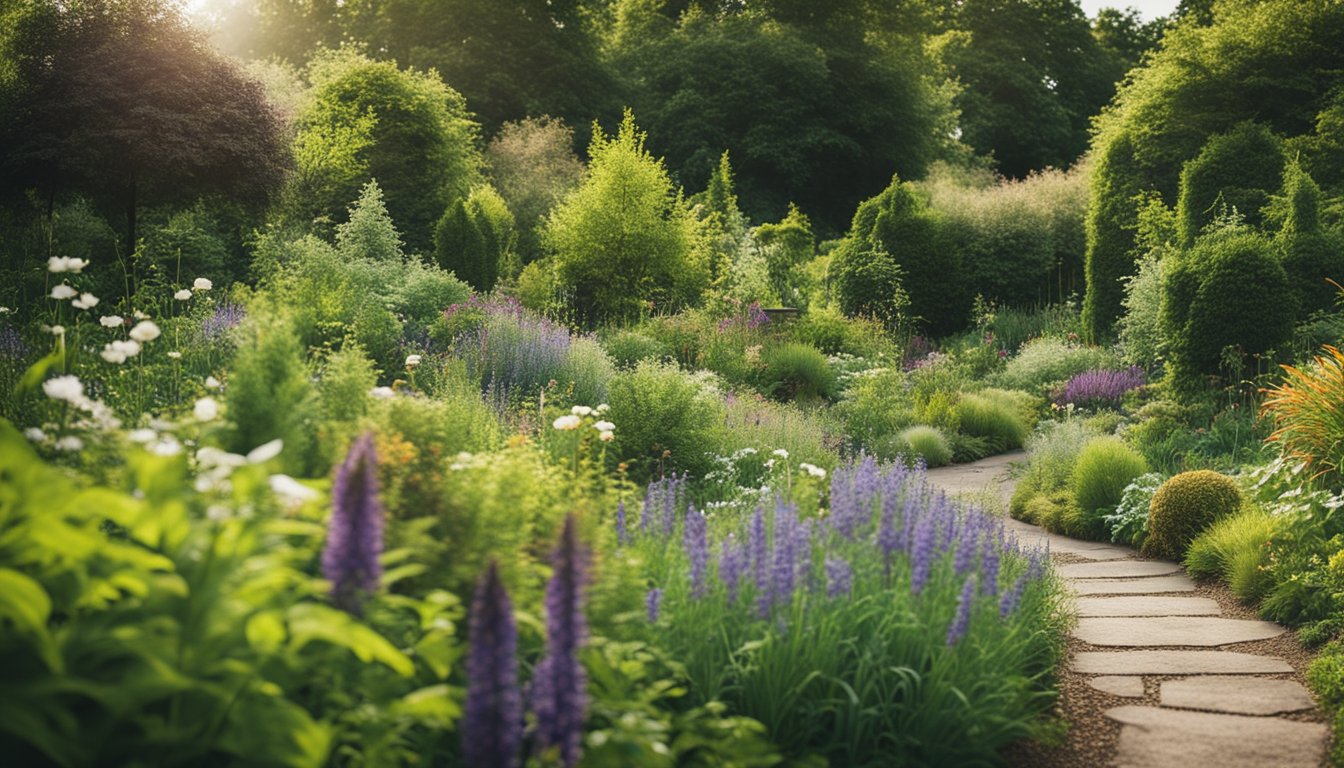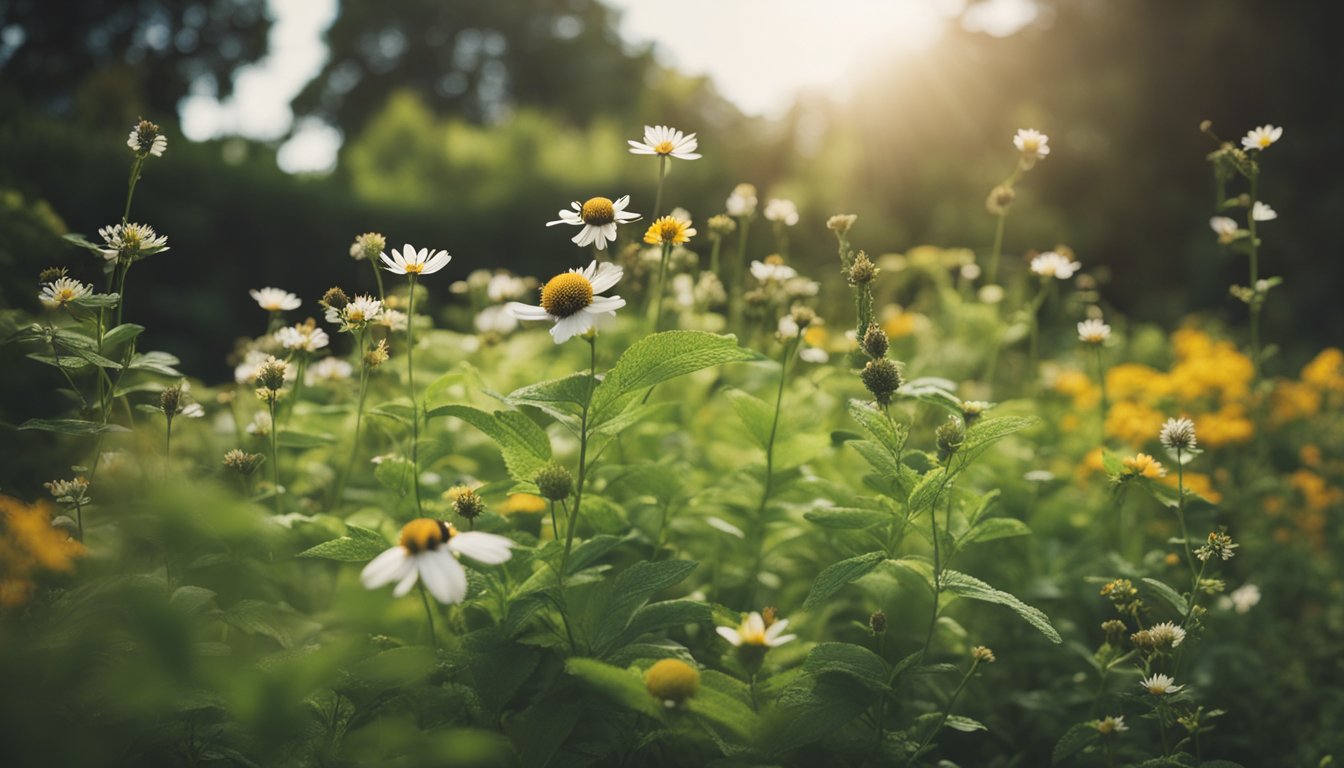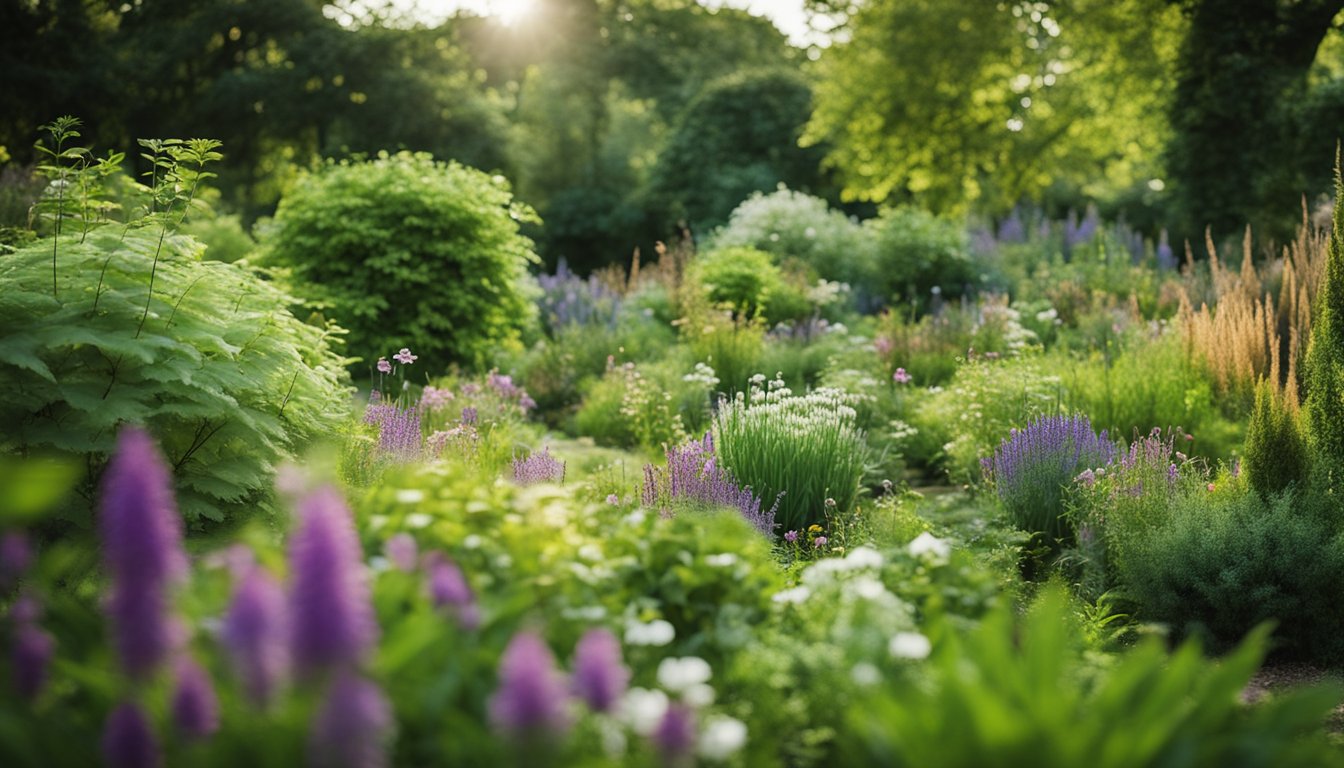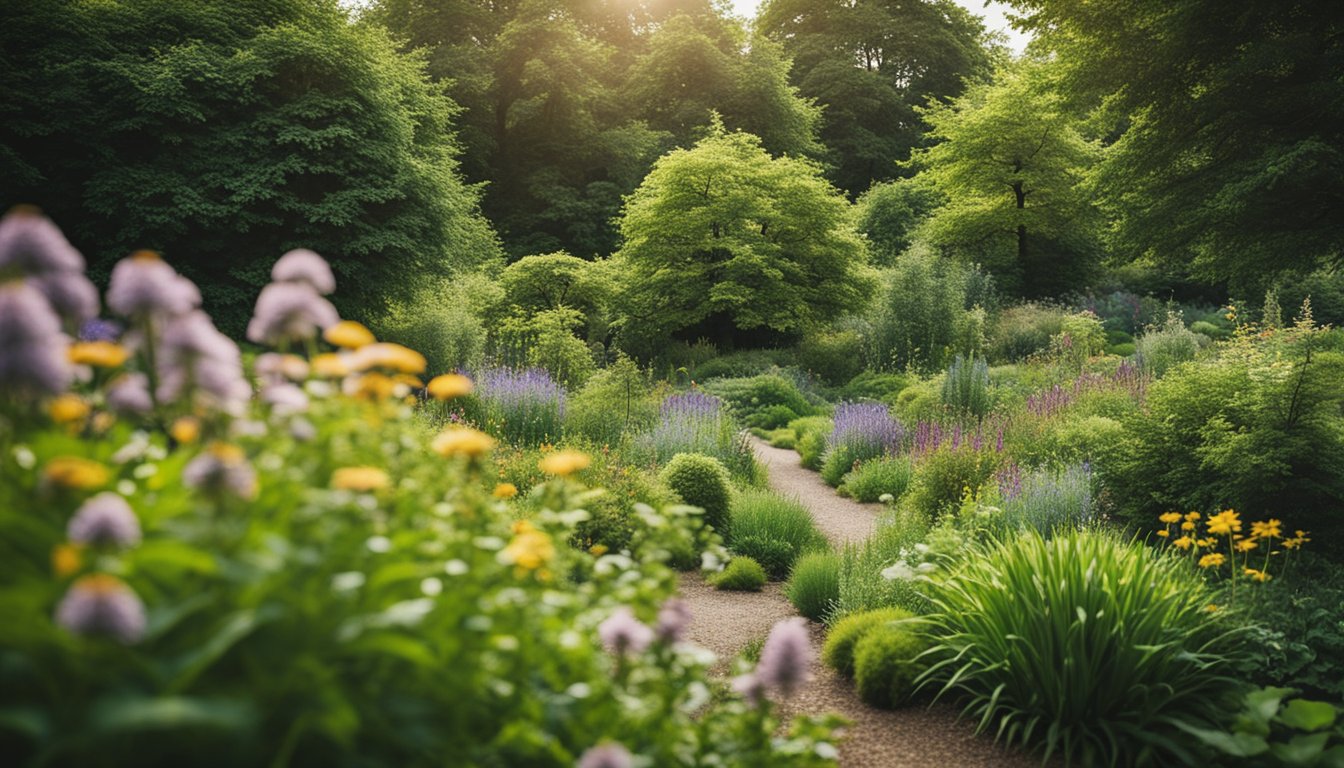Late updated: 29 Sep 2024 11:09
Written by: Emily Thornton
Creating A Wildlife Haven With UK Native Plants: Tips for a Thriving Garden
Embracing the charm of the British countryside in our gardens provides more than just aesthetic value. By incorporating UK native plants, we not only enhance our outdoor spaces but also create a thriving haven for local wildlife. The balance between design and biodiversity becomes apparent as we take steps to ensure our gardens are a sanctuary for birds, insects, and other critters.

Creating a wildlife-friendly garden means opting for flora that native species recognise and rely on. Native plants like Buddleja davidii and holly are fantastic choices, offering nectar-rich flowers and shelter to many creatures. As we plan our gardens, let's focus on these plants to form a habitat that supports diverse ecosystems while reducing the need for extensive gardening maintenance.
The potential to make a meaningful impact on local biodiversity is in our hands. Exciting possibilities unfold when we redesign our gardens with native species, encouraging an increase in biodiversity and supporting the resilience of ecosystems right on our doorstep. Choosing native vegetation not only beautifies our environment but actively participates in the restoration of our natural world.
Key Takeaways
- Native plants support local wildlife and ecosystems.
- Focused planning increases garden biodiversity.
- A wildlife haven boosts resilience in local environments.
Planning Your Wildlife Haven

Creating a wildlife haven with UK native plants requires careful planning to ensure the space thrives year-round and supports diverse wildlife. By assessing garden conditions, selecting appropriate species, and designing for seasonal interest, we can develop a rich, supportive ecosystem.
Assessing Garden Conditions
Understanding our garden's conditions is crucial before choosing the right native plants. We start by evaluating soil type and drainage. Poor soil can often be improved with organic matter, but some native species thrive in less fertile conditions.
We also need to consider sunlight exposure. A sunny spot benefits many wildflowers, while shaded areas might suit ferns or shade-tolerant shrubs. Observing these elements allows us to tailor plant choices for optimal growth and habitability.
Selecting Native Plant Species
Choosing native species enhances biodiversity and promotes local wildlife. We prioritise plants providing nectar or pollen, such as wildflowers and flowering shrubs. These plants attract pollinators like bees and butterflies.
Considering a mix of plants that offer habitats and food sources throughout the year is vital. Trees and shrubs serve as homes for birds, while fruit trees offer food and shelter. Ensuring a blend of species keeps our haven vibrant and bustling with life.
Designing for Year-Round Interest
A thoughtfully designed garden captures interest across seasons. We achieve this by incorporating plants with staggered blooming times. Spring bulbs, summer wildflowers, and autumnal berry bushes ensure continuous activity and colour.
Creating structural diversity is also important. Different plant heights and types provide varied homes and rations. Layering taller trees with medium-sized shrubs and low-growing plants establishes dynamic and engaging landscapes. By planning for seasonal transitions, we maintain vitality and appeal throughout the year.
Creating Habitats for Diverse Wildlife

Native plants play a crucial role in fostering rich habitats for a variety of wildlife. By integrating elements like ponds and nesting sites, we can create thriving environments that support biodiversity in our gardens. This approach benefits species such as bees, butterflies, and hedgehogs.
Building a Pond for Amphibians and Insects
Ponds are vital additions to any wildlife garden, providing essential habitats for amphibians and insects. By selecting native aquatic plants and ensuring varied depths, we can cater to frogs, newts, and dragonflies. Water lilies and marsh marigolds are excellent choices for native plant life that foster pond ecosystems. To maintain a healthy balance, we should avoid introducing fish, as they may consume amphibian eggs and larvae.
Shallow edges allow for easy access and egress, making it safer for small creatures. Ponds attract insects, like dragonflies, that lay eggs on submerged foliage. These bodies of water become lively with activity, supporting a food chain that benefits both aquatic and terrestrial species. This transformation turns a small plot into a sanctuary teeming with life.
Providing Food and Nesting Sites
Encouraging the presence of diverse wildlife involves offering food sources and nesting options. By planting native berry-producing shrubs such as hawthorn and ivy, we supply birds with vital nourishment. Berries act as both a food source and nesting material. Additionally, incorporating nesting boxes for various species, including birds and bats, gives them shelter.
Deciduous hedges of hawthorn or honeysuckle offer cover and nesting grounds for birds like robins and blackbirds. Ground-dwelling insects and small mammals, including hedgehogs, benefit from these structures. Nesting materials like twigs and soft grass can enhance this inviting habitat. These features work in harmony, turning our gardens into thriving ecosystems.
Encouraging Beneficial Insects
To attract beneficial insects, we can plant a mix of native flowering plants. Varieties like honeysuckle are particularly effective. Insect hotels are another means to foster biodiversity by providing homes for pollinators like bees. These structures comprise hollow stems and small cavities that mimic natural environments ideal for bees and other insects.
Maintaining a diverse plant selection ensures continuous blossoming through the seasons. This variety nourishes butterflies and bees all year round. Caterpillars find refuge in the foliage, providing important links in the ecosystem. By focusing on these strategies, we can create a balanced wildlife habitat that supports a range of beneficial insects, ensuring our gardens buzz with life and activity.
Frequently Asked Questions

In our exploration of creating a wildlife haven with native UK plants, we delve into specific strategies around plant selection, garden design, and beneficial features. These approaches aim to optimise your outdoor space to support and attract local wildlife effectively.
What are the best plants to use for attracting wildlife in a UK garden?
Native wildflowers such as primroses and bluebells are ideal for attracting pollinators like bees and butterflies. Hedgerows planted with hawthorn or blackthorn can provide shelter for birds. Choosing a mix of flowering plants ensures a continuous supply of nectar and pollen throughout the year.
How can one design a small garden to encourage biodiversity?
Utilising vertical space for climbing plants like honeysuckle or clematis can attract more species and save ground space. Adding layered planting with shrubs, perennials, and ground cover can create diverse habitats. Even in limited areas, a small pond or water feature can offer sustenance and refuge to various amphibians and insects.
What are effective landscaping techniques for creating a low-maintenance, wildlife-friendly garden?
Incorporating mulch can reduce weed growth and conserve moisture, thus lowering maintenance. Choosing drought-tolerant native plants reduces the need for watering. Mulch paths and stepping stones can also guide your movement without disturbing habitats. Letting some areas of the garden grow wild encourages natural ecosystems to thrive.
How can I transform my outdoor space into a haven for local wildlife?
Start small by introducing bird feeders and insect hotels. Incorporating a range of plant heights and types can increase habitat variety. Providing fresh water through birdbaths or small ponds is crucial. Removing invasive species and replacing them with native alternatives further supports local wildlife.
What steps should be taken to increase garden biodiversity in the UK?
Planting a variety of native species is key. Creating habitats such as log piles or compost heaps can encourage beneficial insects and small mammals. Avoiding synthetic pesticides and opting for organic solutions helps maintain ecological balance. Mixing trees, shrubs, and wildflowers offers diverse resources for different species.
Which features are essential in a garden to support a variety of wildlife species?
A garden pond can support amphibians and attract a variety of bird species. Dense hedges provide nesting sites and shelter. Diverse plant structures, including trees and shrubs, create various niche environments. Deadwood habitats foster insects, supporting the food chain for birds and mammals alike.
